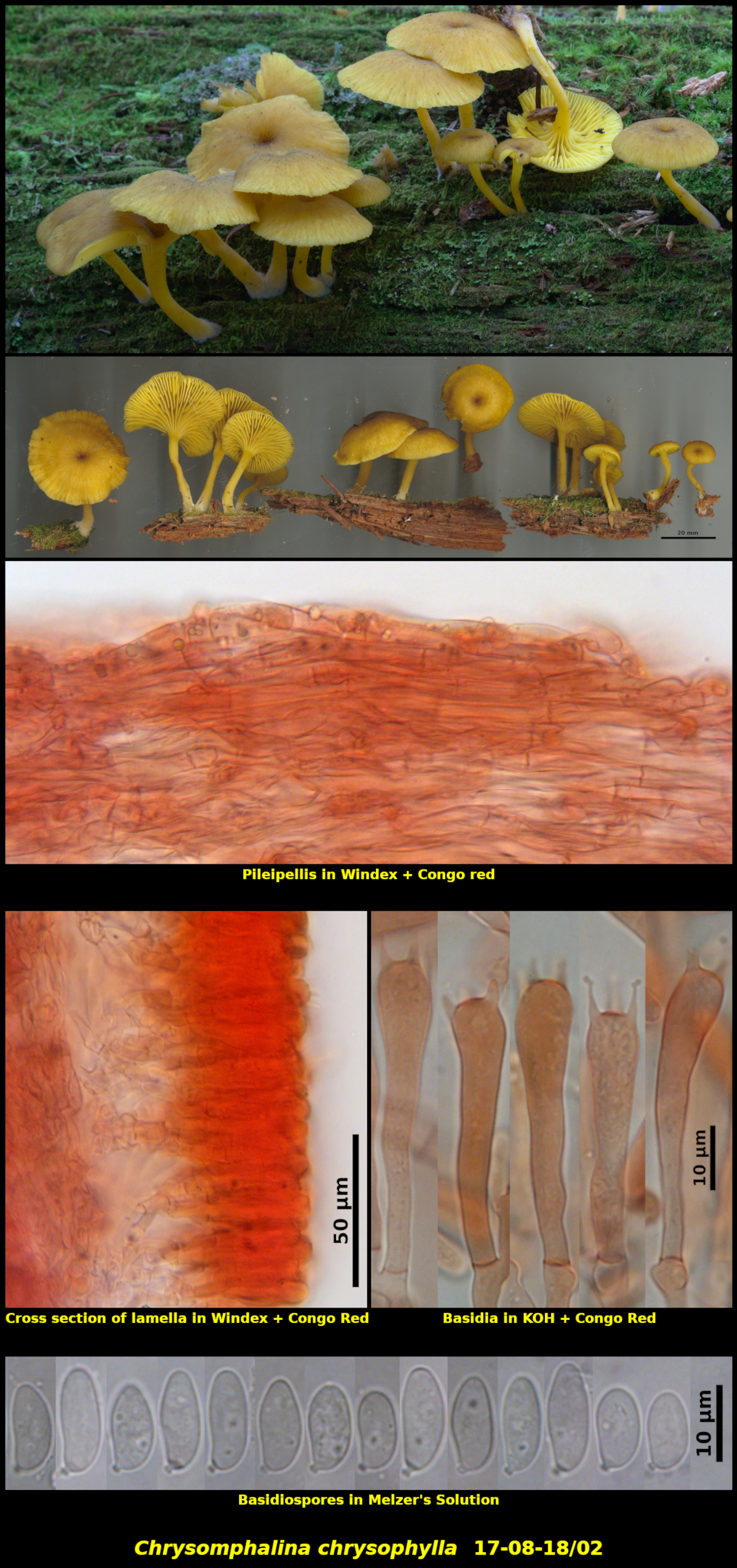Fleshy Fungi of New Brunswick >>
Chrysomphalina chrysophylla
Chrysomphalina chrysophylla (Fries) Clémançon

Gregarious to clustered (many) on a rotting log of Abies balsamea in senescent forest dominated by Abies balsamea and Picea rubens, Little Lepreau, New Brunswick (17-08-18/02).
Pileus convex when young and remaining so at maturity, with a marked central depression, moist, not striate at the margin, glabrous, light brown (HSV40:80:50-60) when first formed, later bright orange brown (HSV50:40-50:90), 15-46 mm in diameter. Stipe equal or slightly swollen at the base, subcartilaginous, hollow, bright yellow orange (HSV50:40-50:100), obscurely pruinose at the apex but otherwise glabrous down to the white-mycelia base, 20-32 X 3-5 mm. Lamellae bright orange-yellow (HSV55:40-50:100), close, decurrent, not marginate. Flesh concolorous with the surface tissues in both pileus and stipe, with a pronounced but nondescript mushroom odour and taste.
Basidiospores forming a spore print too weak to assign to colour, ellipsoidal to boletoid, smooth, inamyloid, 10.1-15.7 x 4.8-7.2 µm, Q = 1.81-3.00 (average[45]: 12.5 x 5.5 µm, Q = 2.28). Basidia produced from a rather open subhymenium with supporting hyphae easily separated in KOH, narrowly clavate, 4-spored, lacking a basal clamp connection. Hymenial cystidia lacking. Pileipellis a cutis, not greatly differentiated from the tissues of the pileus. Clamp connections lacking.
A rather distinctive species recognized by its brown to yellow pileus, yellow stipe, decurrent bright yellow lamellae and by its growth on the dead wood of conifers. Microscopically it is characterized by its thick and open subhymenium, narrow basidia, lack of both cystidia and clamp connections and, at least in our material, often narrow and subboletoid basidiospores.
Collection 17-08-18/02 has longer basidiospores than those described from most European collections, where the species was first described.
Photograph: D. Malloch (17-08-18/02).